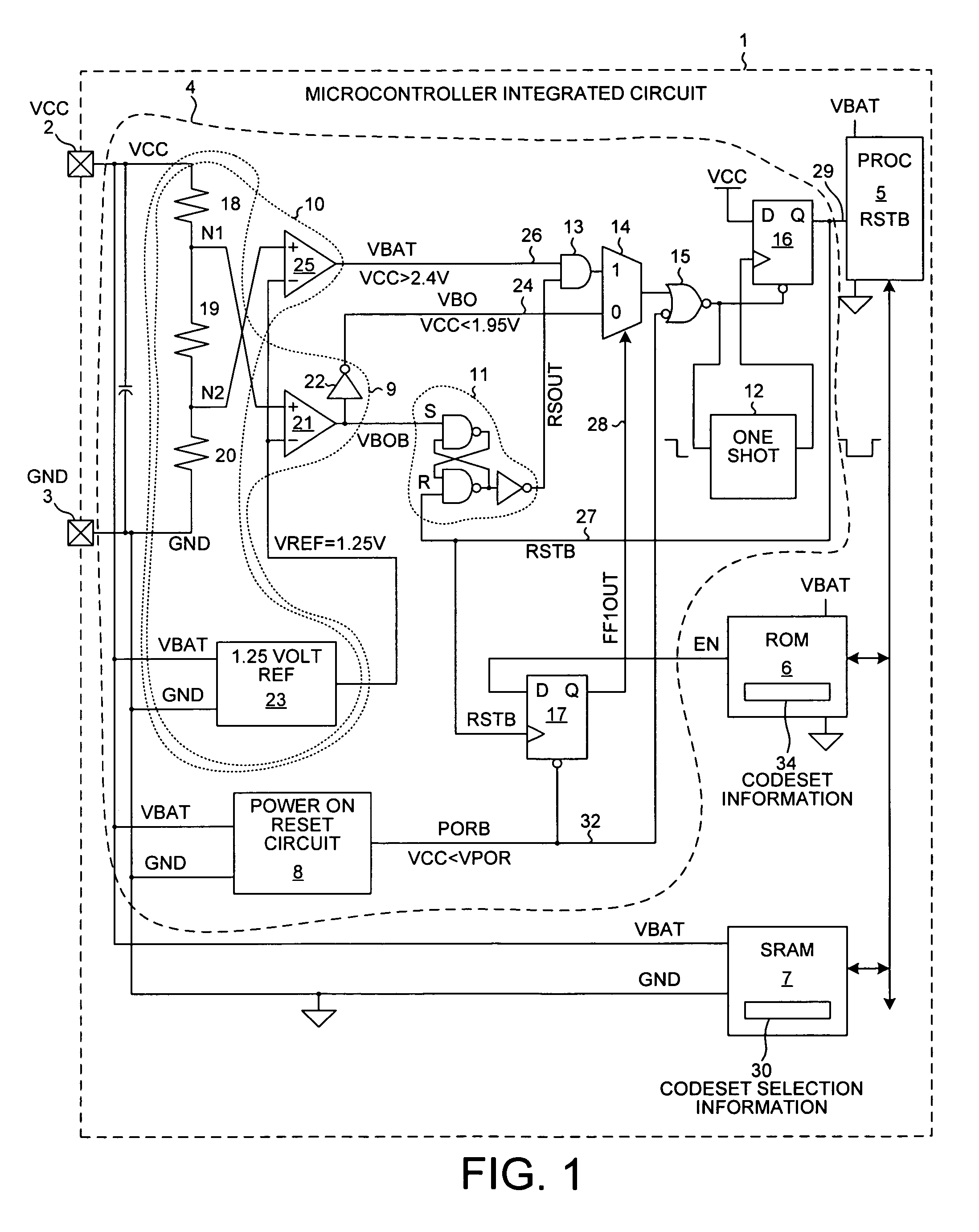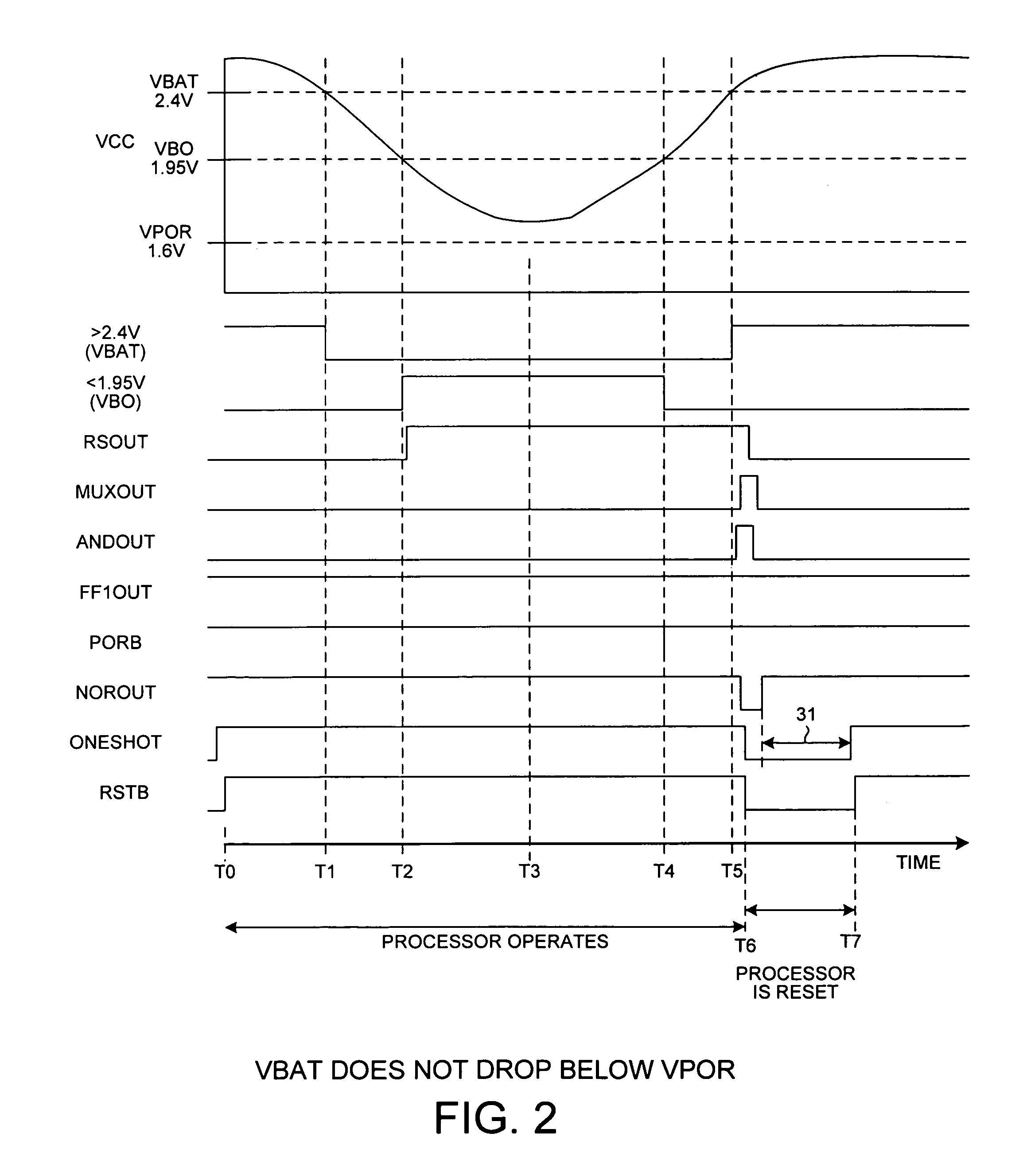Latent VBO reset circuit
a technology of vbo and reset circuit, which is applied in the field of microcontrollers, can solve the problems of inability to discharge the internal supply lines of the microcontroller in a manner that is not always desirable, and the microcontroller operating out of the specified supply voltage operating range can enter an illegal state and become stuck, so as to maximize the useful life of the battery and remove the effect of latent potential ill-effects
- Summary
- Abstract
- Description
- Claims
- Application Information
AI Technical Summary
Benefits of technology
Problems solved by technology
Method used
Image
Examples
Embodiment Construction
[0021]FIG. 1 is a simplified diagram of a microcontroller integrated circuit 1 in accordance with one novel aspect. Microcontroller integrated circuit 1 includes a power terminal 2 (also called a supply voltage terminal or VCC terminal), a ground terminal 3, a novel reset circuit 4 referred to here as a “latent VBO reset circuit”, a digital processor 5 that executes instructions, a read only memory (ROM) 6, and a static random access memory (SRAM) 7. Latent VBO reset circuit 4 causes processor 5 to be reset automatically if a supply voltage on power terminal 2 falls below a second voltage (for example, 1.95 volts) and then rises above a third voltage (for example, 2.4 volts) without first falling below a first voltage (for example, 1.6 volts).
[0022]Latent VBO reset circuit 4 includes a power on reset (POR) circuit 8. POR circuit 8 can be an AC-type POR circuit that is sensitive to the edge rate of the supply voltage on terminal 2. POR circuit 8 can also be a DC-type level sensitive ...
PUM
 Login to View More
Login to View More Abstract
Description
Claims
Application Information
 Login to View More
Login to View More - R&D
- Intellectual Property
- Life Sciences
- Materials
- Tech Scout
- Unparalleled Data Quality
- Higher Quality Content
- 60% Fewer Hallucinations
Browse by: Latest US Patents, China's latest patents, Technical Efficacy Thesaurus, Application Domain, Technology Topic, Popular Technical Reports.
© 2025 PatSnap. All rights reserved.Legal|Privacy policy|Modern Slavery Act Transparency Statement|Sitemap|About US| Contact US: help@patsnap.com



